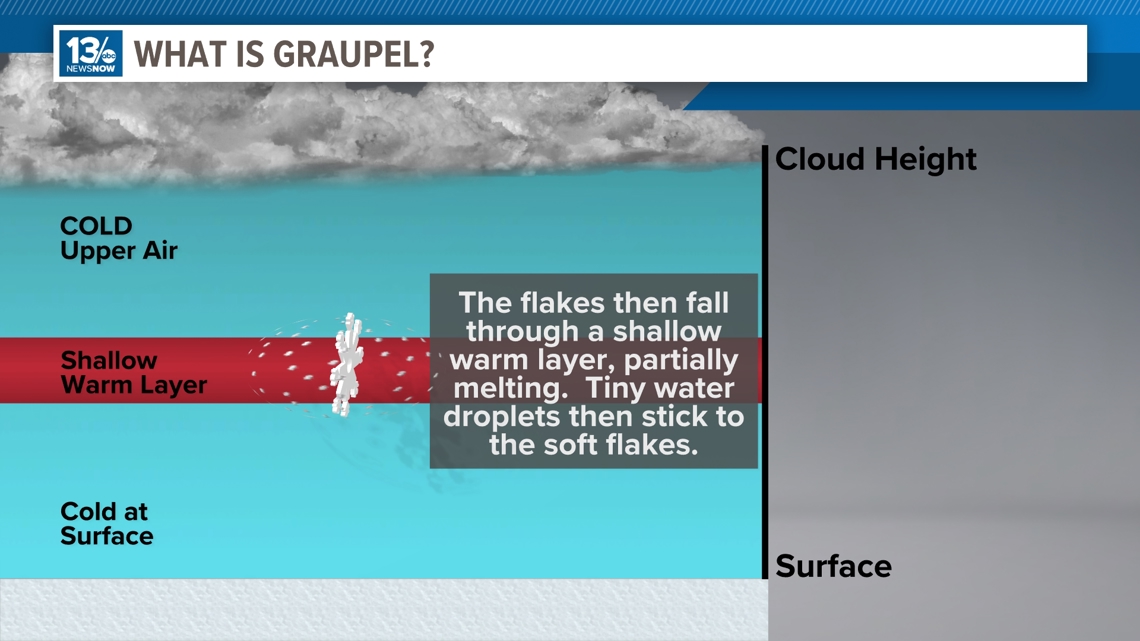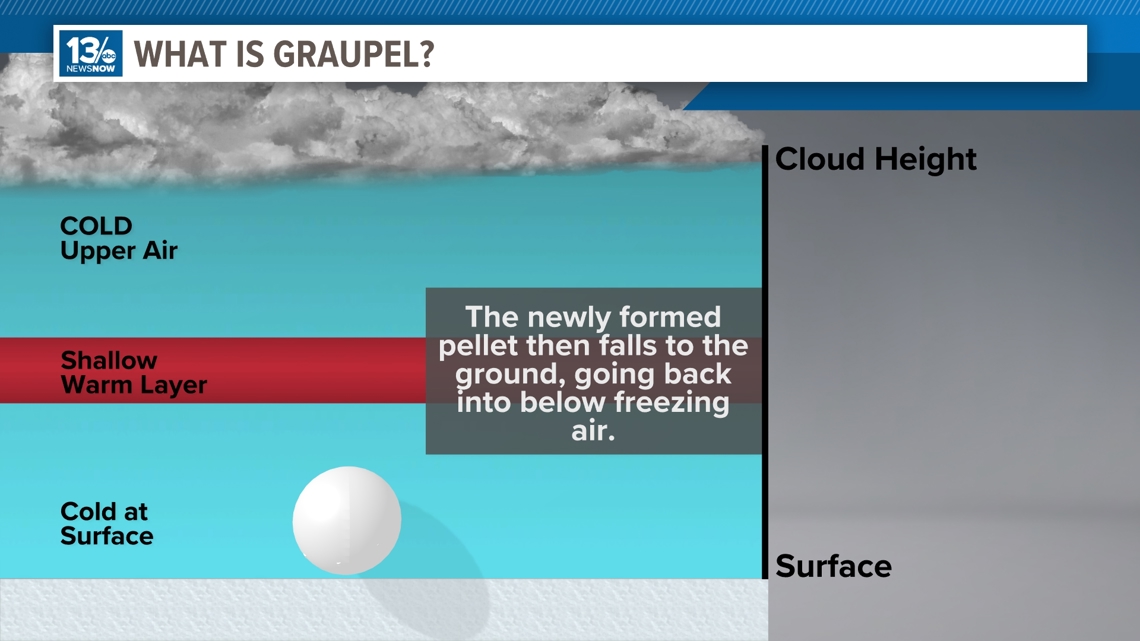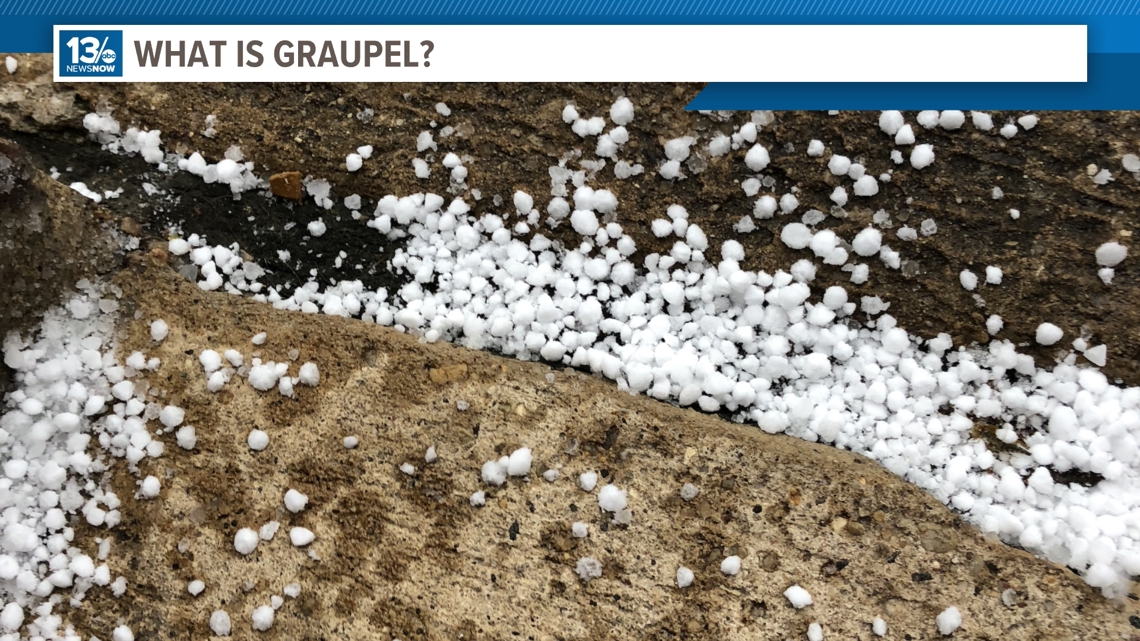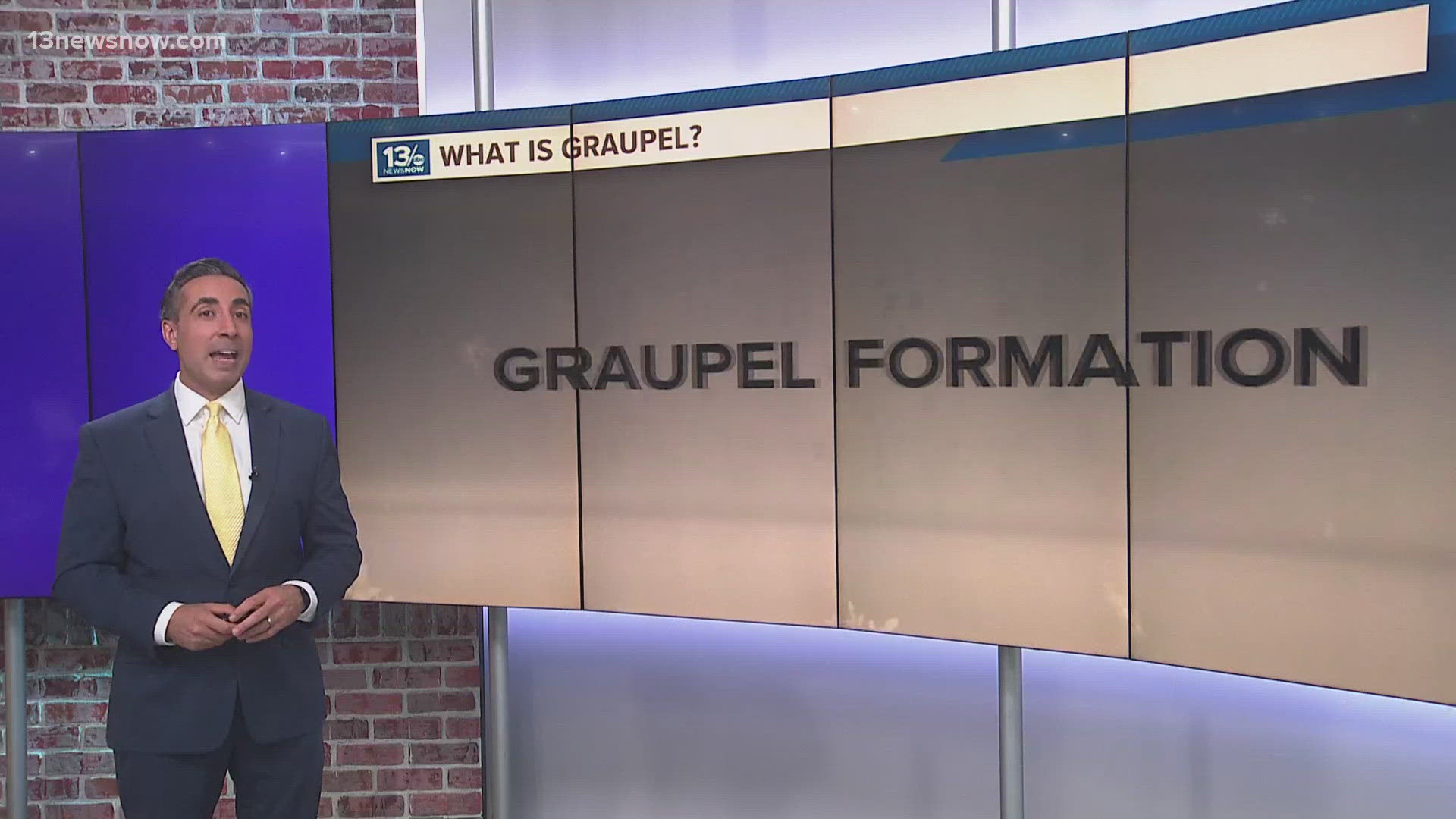NORFOLK, Va. — One of the more elusive types of precipitation is one that is most confused with several other types of precipitation. We are talking about graupel!
When we do experience graupel, which is quite rare, it is almost always misidentified as sleet or hail – two other types of winter precipitation that are formed from totally different processes.
The word graupel itself is German, and also called soft hail or snow pellets.
Graupel can form and fall in a wide variety of circumstances; temperatures at the surface could even be well above freezing. As long as temperatures higher up are cold enough, graupel can form and make it to the ground.
So, let's dive into the process that forms graupel!


As with any type of precipitation, its journey begins thousands of feet up in the sky, in graupel’s case it begins as a snowflake. This snowflake descends from the clouds through an upper layer of cold air.


The flakes then encounter a shallow layer of air that is above freezing. This partially begins to melt the snowflake and tiny water droplets begin to stick to the softened snowflakes.


As this happens, the snowflake begins to changes its appearance to more of a pellet.


This newly formed pellet continues its fall towards the ground and just before hitting the surface it encounters a layer of air below freezing, reaching the ground as a frozen snow pellet. It looks like this:


You can see how graupel could be confused with hail or sleet, as it looks very similar. We like to refer to graupel as looking like Dippin' Dots. But there's only one flavor served here, and that’s plain.

